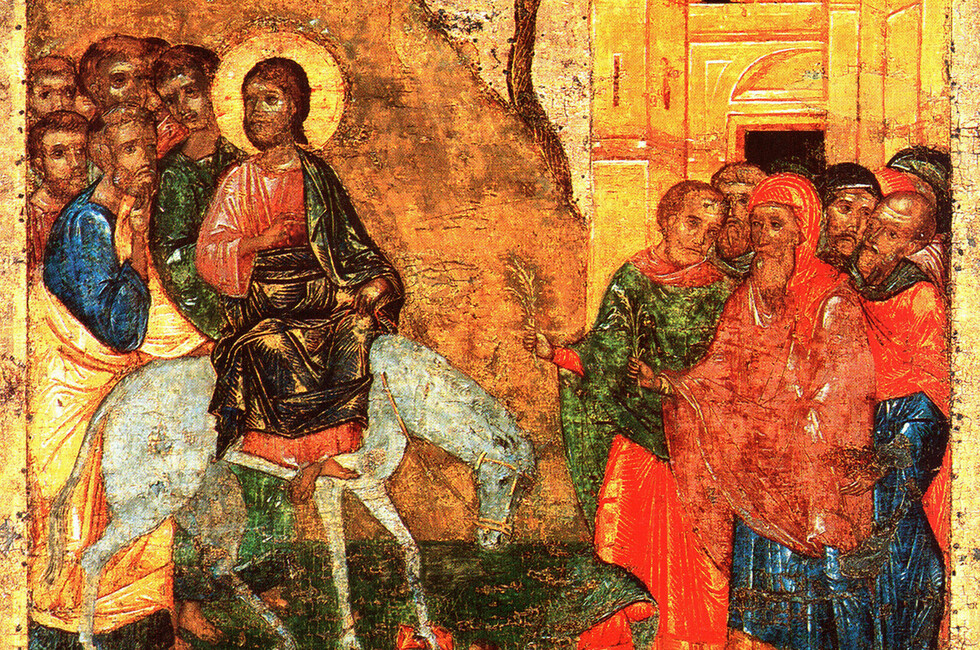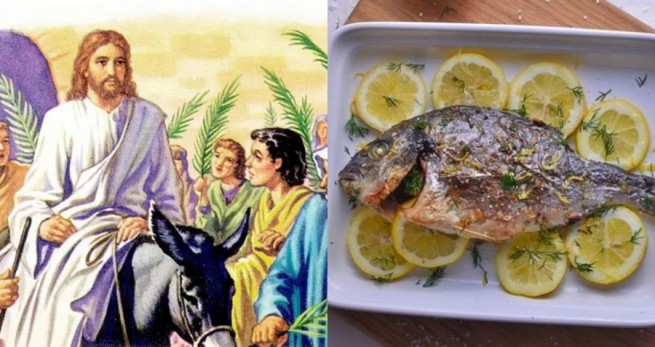Many people do not know that Lent ends on the Friday before Lazarus Saturday, followed by the fast of Holy Week.
Lent is the longest period of food restriction provided for by the church. It includes forty days – from Clean Monday to the Friday before Lazarus Saturday.
This means that throughout the entire period the consumption of products containing blood, that is, meat and fish, and at the same time dairy products (milk-kefir-cheese-butter), eggs are prohibited.
On Saturdays and Sundays the consumption of oil and wine is allowed. On Mondays, Tuesdays and Thursdays, believers are allowed to eat butter only for health reasons and with the approval of their clergy. There are three exceptions during Lent and Holy Week:
- Annunciation of the Virgin Mary (March 25), when you can eat fish (cod).
- In memory of the holy forty martyrs (March 26), oil and wine are allowed.
- Palm Sunday, when custom calls for eating fish.
Reason for breaking fast on Palm Sunday
Palm Sunday celebrates Jesus' entry into Jerusalem and, due to the importance of the event, it is permitted to eat fish.
The Entry of the Lord into Jerusalem, or Palm Sunday, is celebrated today by Orthodox believers. This is one of the twelve, that is, the 12 most important holidays after Easter in the Orthodox church calendar. It recalls the triumphal entry of Jesus Christ into Jerusalem, described in all four Gospels.

Gospel texts say that in the last year of his earthly life the Savior went to Jerusalem along with his disciples. On the way, he received news of the illness of Lazarus from Bethany, whom he called his friend. But, to the surprise of those accompanying him, he did not rush, calling Lazarus’ illness “not to death, but to the glory of God.” When Christ finally reached Bethany, his friend had already died for four days, and his body was in the burial cave. Approaching her, Jesus began to pray, and then loudly exclaimed: “Lazarus, get out!” At this moment, the deceased was resurrected and left the tomb. It is this gospel event that preceded the entry into Jerusalem that is especially revered by the Church. The eve of Palm Sunday is called “Lazarus Saturday”.
The miracle of the resurrection, which immediately became known throughout Israel, convinced people that Jesus was the long-awaited Messiah who, according to Old Testament prophecies, was supposed to free him from the power of Rome.
Entry of the Lord into Jerusalem
The day after the events in Bethany, Christ drove up to Jerusalem, where at that moment, in anticipation of the celebration of the Jewish Passover, many pilgrims had gathered. Everyone expected some kind of solemn entry of the Savior, but he proceeded through the city gates not triumphantly and on horseback, but on a simple donkey. The people greeted Jesus as a future savior, spreading clothes and palm branches on the road in front of him. The latter symbolized victory in the East, and therefore they were necessarily taken with them on pilgrimages to holy places.
Arriving at the Jerusalem Temple, Jesus drove out the merchants who had opened their shops for the holiday. He declared, “Do not make My Father’s house a house of trade,” and thereby for the first time called himself the Son of God. This act aroused the anger of the high priests, but none of them began to resist, especially since after Christ healed all the sick and infirm who came to the temple, the people believed in him even more as the savior of Israel. In the evening he returned to Bethany, to the house of Lazarus, along with his disciples and followers.
In memory of the described event, Christians and Catholics use palm branches to celebrate the Entry of the Lord into Jerusalem.







More Stories
Greece celebrates Victory Day – photo and video (added)
In Symi, Antikyra and Arachova, barbecues started smoking: Greeks celebrate Easter on a grand scale
History and traditions of Easter